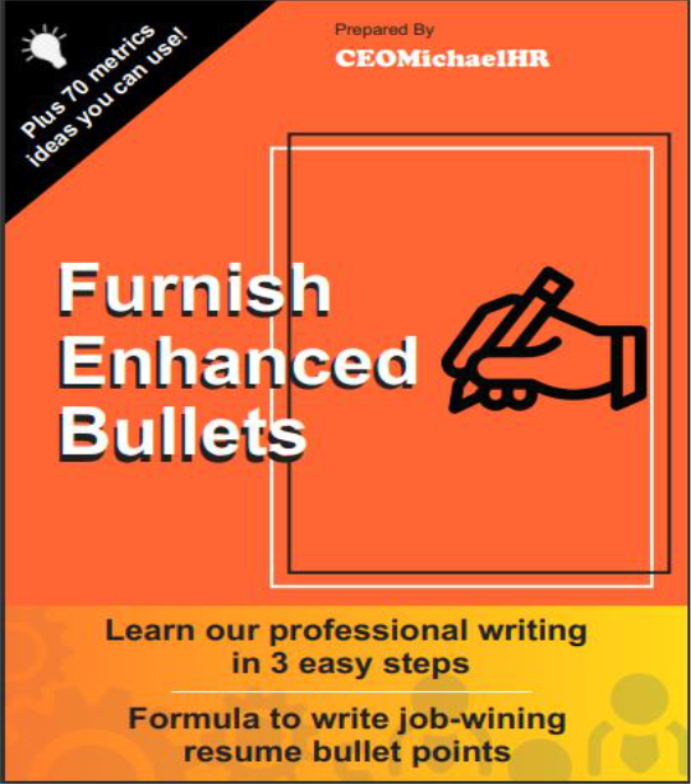
New clients, unlock 10% off all plans 🔥 at checkout with code: CEO10SPECIAL (Limited Time Offer)
New clients, unlock 10% off all plans 🔥 at checkout with code: CEO10SPECIAL (Limited Time Offer)






Are you tired of submitting dry, uninspired resumes that fail to capture your unique personality and professional experiences?
If so, it might be time to start incorporating storytelling in your resume and job application process.
While some recruiters may prefer traditional bullet-pointed resumes, more and more hiring managers are seeking candidates who can share their story in a compelling way.
According to bestselling author Seth Godin, a great resume should be all about “telling stories that register.”
It’s all about using language and formatting to showcase your skills and experiences in a way that engages the reader and paints a vivid picture of who you are as a professional.
Instead of simply listing your past job titles and responsibilities, try to incorporate specific examples of how you made a difference in your previous roles.
As Terrence Gargiulo points out, HR managers often approach resumes with their “story mind.” By presenting your experiences in a narrative format, you’re helping them construct a story and image of you as a candidate.
He further noted that hiring managers typically use a technique called “thin-slicing” to quickly assess your qualifications and decide if you’re a good fit for the job.
It’s the ability of our unconscious minds to find patterns and meaning in situations and behavior based on very limited information.
In other words, hiring managers will quickly scan your resume and make snap judgments based on the few key details that catch their eye.
So, what can you do to stand out in those crucial 2.5 to 20 seconds recruiter’s attention span on your resume?
The answer lies in crafting a compelling narrative that resonates with the employer. Rather than just listing your skills and experience, weave them into a coherent story that showcases your unique talents and demonstrates your value to the company.
Remember, your resume is your first chance to make a great impression on a potential employer. Make sure that your “thin slice” is packed with powerful details that make you stand out from the competition
Ensure to infuse your resume with your unique voice and personality. Share your accomplishments, your passions, and your goals in a way that’s authentic and engaging.
After all, the best way to stand out in a sea of job applicants is to tell a story that no one else can.
Find out: How to Make Your Resume Stand Out: Real Examples
As a job-seeker, you can shape the way you are perceived by potential employers by crafting a compelling narrative that showcases your unique skills, experience, and passion
As Liz Ryan of WorldWIT points out, the biggest complaints about most resumes are that they’re too long and boring.
To make your resume stand out, you need to tell your story.
Your resume is essentially a marketing brochure, and it has to tell the story of who you are and what you’ve accomplished.
As Ryan notes, the human need for stories is a vital clue for job seekers. Employers want to know who you are and what makes you unique.
One of Ryan’s favorite resumes is from a controller who includes the line “Unusually wicked sense of humor for a Finance type.” This tells the employer something about the candidate’s personality and makes them more memorable.
To create storytelling in your resume, you need to highlight and interpret your experiences in the context of the job or career you’re applying for. This will give your story the quality and coherence it needs to win a recruiter’s trust and interest, as an unnamed blogger on Fincareer writes.
But it’s not just about the final product; the process of compiling your resume can also be valuable.
According to Herminia Ibarra and Kent Lineback in Harvard Business Review, the act of drafting your resume is an opportunity to define your story.
Everything in your resume should point to one goal: the climax of the story you’re telling.
By better defining what excites you about your chosen field, you can create a resume that is more than just a list of qualifications.
To truly make your resume stand out, you need to substantiate your claims about yourself with stories.
Too many resumes are filled with adjectives and meaningless puffery, but stories give your claims depth and credibility.
By telling your story, you can show employers who you are and what you’re capable of, making you more memorable and more likely to land the job.
Find out: Expert Resume Writing Tips for New Graduates- Best Guide
Here are six tips for crafting an inspirational resume that effectively showcases your accomplishments and tells your professional story:
Your resume should tell the story of your professional journey. Use the summary section at the top of your resume to introduce yourself and highlight your most notable achievements.
When listing your previous job roles, focus on the accomplishments you achieved in each position, rather than simply listing the tasks and responsibilities you had.
Your resume should be primarily accomplishments-driven, rather than driven by duties and responsibilities. Tell your accomplishments in a story form to make them stand out.
Reverse the order of your accomplishments by listing the results you achieved first, followed by the action you took, and the situation or challenge that contextualized your achievement.
Consider using a resume addendum or career biography to share more detailed stories about your accomplishments and outcomes.
Most employers prefer a resume formatted mostly in bullet points. While you can tell stories in your bullet points, be concise and avoid wordiness. Save the more detailed stories for your cover letter and interview.
In conclusion, storytelling is a powerful tool that can transform an ordinary resume into an extraordinary one.
By crafting a narrative that highlights your career journey, accomplishments, and future aspirations, you can captivate potential employers and stand out in a sea of applicants.
With the help of CEOMichaelHR, the best affordable resume writing service, you can take your storytelling to the next level and make a lasting impression on hiring managers.
Don’t miss out on the opportunity to showcase your unique talents and experiences – invest in a well-crafted resume today!
Share
Further Reading
*The names and logos of the companies referred to in this page are all trademarks of their respective holders. Unless specifically stated otherwise, such references are not intended to imply any affiliation or association with CEOMichaelHR.
Land interviews 3x faster while submitting fewer resumes
Copyright © 2025, ceomichaelhr.com.
All rights reserved.
Land interviews 3x faster while submitting fewer resumes
Copyright © 2025, ceomichaelhr.com.
All rights reserved.

Learn the same techniques our expert resume writers have used to get thousands of clients closer to their next job
Unlock expert resume tips, start landing multiple interviews!

Stay connected to receive powerful career insights, updates, and inspiration that’ll help you hit your career goals.